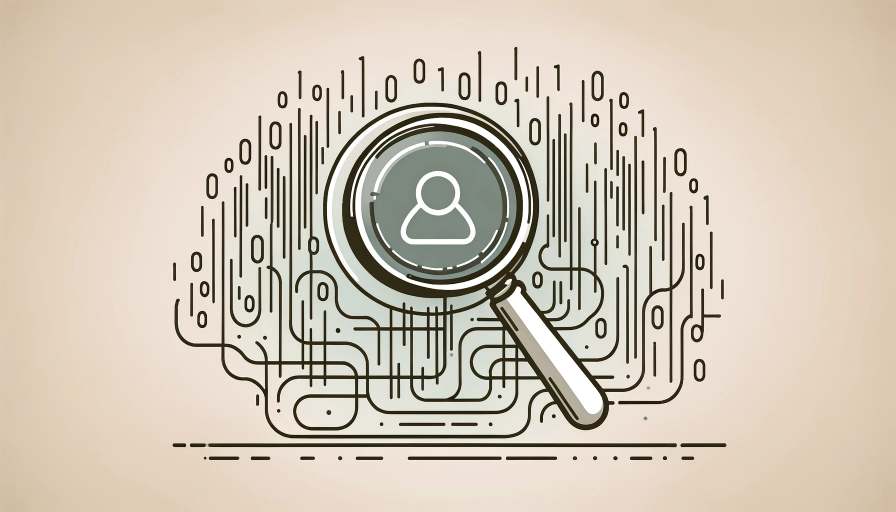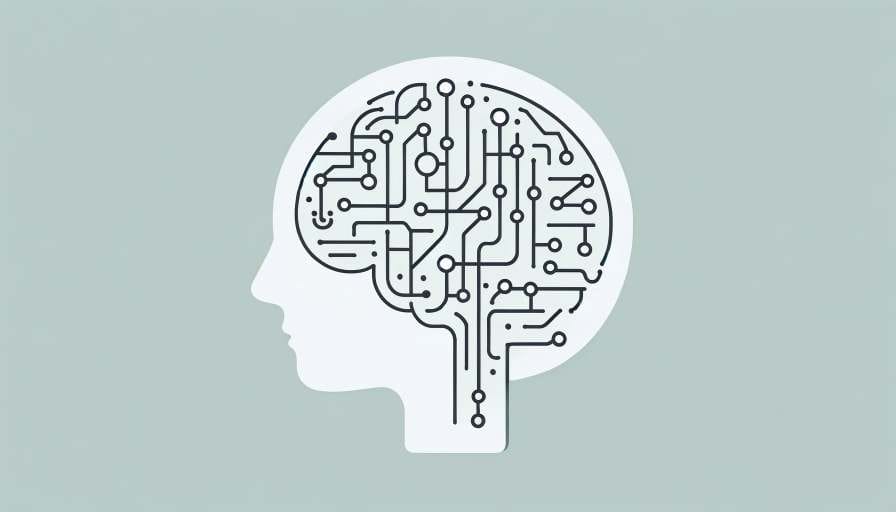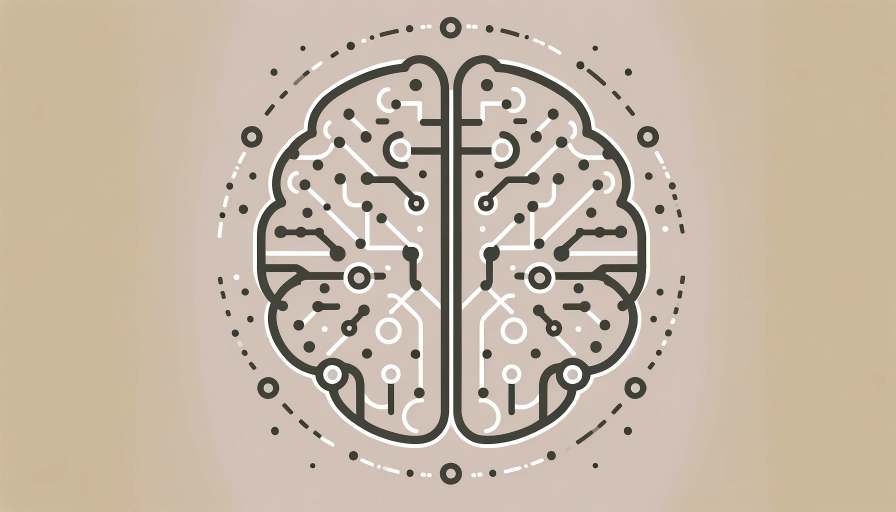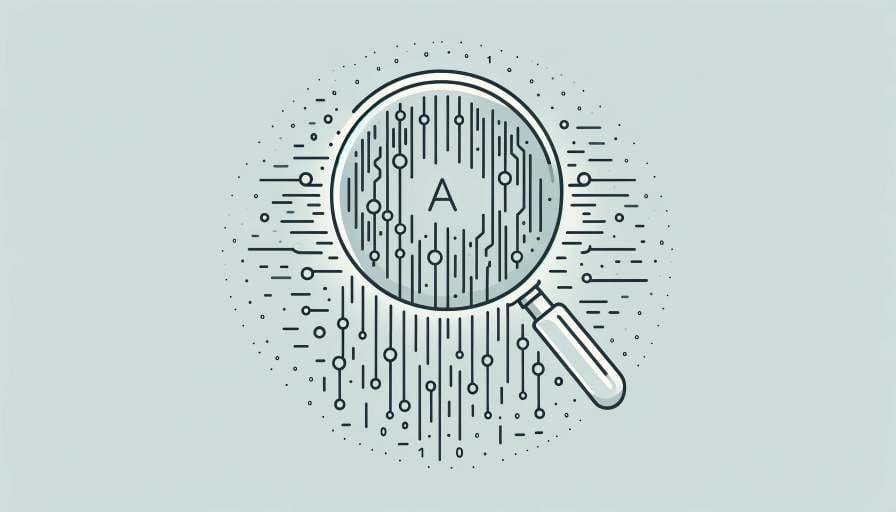In the ever-evolving world of artificial intelligence, AI detectors have emerged as essential tools for identifying AI-generated content. By leveraging advanced AI detection technology and language models, these detectors help maintain integrity across various platforms, from academia to content creation. How do AI detectors work, and why are they so crucial in today’s digital landscape?
In this article, we will explore the inner workings of artificial intelligence detectors, their importance in detecting AI-generated content, and the future of AI detection algorithms.
How Do AI Detectors Work and Why Are They Important?
AI detectors, also known as AI content detectors, are sophisticated algorithms designed to distinguish AI-generated text from human-written content. With the growing prevalence of AI writing tools in content creation, it has become increasingly challenging to differentiate between text generated by AI and human creativity. AI detectors, sometimes referred to as GPT detectors, hold great significance for various stakeholders, including educators, publishers, and content marketers, all of whom seek to guarantee that work is original and human-made.
These detection tools are particularly vital in academic settings, where they help discourage dishonesty and maintain the quality and authenticity of published work. Their importance extends beyond academic circles, with many industries and platforms relying on AI detectors to ensure the integrity of content. In this section, we delve into the workings of AI detectors and their relevance in today’s content-driven world.
AI detectors are algorithms that aim to separate AI-generated text from human-authored content, ensuring originality and integrity in various fields and platforms.
AI detectors utilize the same language models found in AI writing tools and are intelligently built to prevent AI-generated text from passing as human-written content. They analyze specific patterns and characteristics within a piece of text to determine if it is likely the product of AI-generated language. The ability to recognize and detect AI-generated content is of paramount importance, as it plays a crucial role in preserving the authenticity of content, curbing plagiarism, and meeting ethical standards across different sectors.
Some of the key reasons why AI detectors are essential include:
- Maintaining the integrity of academic work: AI detectors help educators spot AI-generated submissions by students, ensuring original work and discouraging dishonesty.
- Content marketing and SEO: Publishers and marketers use AI detectors to guarantee that content is genuine and not potentially harmful AI-generated content, which could be detrimental to their website rankings, brand reputation, and user trust.
- Combating misinformation: AI-generated content spreading inaccurate or misleading information can have severe repercussions. AI detectors enable platforms and readers to flag and eliminate such content quickly.
| Relevance of AI Detectors | Key Contribution |
|---|---|
| Academia | Detect AI-generated submissions, ensuring original work and discouraging academical dishonesty. |
| Content Marketing and SEO | Ensure that the content is not AI-generated, avoiding harmful impacts on website rankings and user trust. |
| Misinformation | Allow platforms and readers to flag and eliminate potentially harmful AI-generated content that may spread false information. |
In conclusion, AI detectors play a crucial role in distinguishing AI-generated content from human-written text, safeguarding the originality and quality of content across various platforms. As AI technology continues to evolve and impact numerous sectors, AI detectors’ importance will only grow further, serving as necessary tools to maintain a culture of authenticity, credibility, and integrity in the digital world.
Peeking Inside AI Detectors: How Language Models Power Detection

AI detectors use advanced language models to analyze text characteristics, such as perplexity and burstiness, in order to determine whether content originated from an AI language model or was written by a human. In this section, we’ll delve into these key factors and explore potential future developments in AI detection, including the introduction of AI watermarks.
Grasping Perplexity in AI-Generated Text
Perplexity serves as an essential metric for AI detectors. It measures how surprising or predictable a given text might be. A text with a lower perplexity level suggests that it is more likely generated by AI, using language models capable of producing content that is more predictable and less likely to confuse readers.
AI language models aim to generate text with low perplexity, which is often characterized by straightforward, logical text that lacks the creative nuances typically found in human writing.
Deciphering Burstiness and Its Role in Content Detection
Burstiness is another analytical metric utilized by AI detectors to assess the variation within sentence structure and length. AI-generated text usually exhibits lower burstiness, as language models predict the most statistically likely structure, leading to more uniform content. On the other hand, human writing often demonstrates high burstiness, reflecting a broader range of sentence lengths and structures.
- AI-generated text: low burstiness
- Human-written text: high burstiness
Potential Future Developments: Watermarks and Beyond
As AI models advance and become even more intertwined with various sectors, the future may hold various methodologies for detecting AI-generated content. One exciting potential development is the use of watermarking technology, such as that proposed by OpenAI. This watermark system would embed an invisible mark within AI-generated text, enabling definitive identification of AI content, though details and viability are still being explored.
In conclusion, understanding how language models and their corresponding metrics, such as perplexity and burstiness, influence AI detectors is crucial for accurately identifying AI-generated content. As the future unfolds, we can expect innovations like AI watermarks to further enhance the AI detection process, helping us maintain content integrity across an increasingly digital world.
Evaluating the Effectiveness of AI Detectors

As the use of AI-generated content expands across various fields and applications, the need for accurate AI writing detectors becomes crucial. However, the effectiveness of AI detectors in identifying AI-generated text is not absolute, and results may vary depending on various factors.
Length of Text
The ability to detect AI-generated content improves when analyzing longer texts. A higher word count provides AI detectors with more data points to scrutinize, enhancing their accuracy and effectiveness.
Factors such as editing, paraphrasing, or crafting AI content to be less predictable can reduce detection accuracy.
Tiers of AI Detectors
AI detectors’ effectiveness differs based on the type of tool being utilized. The accuracy of premium AI detection tools has been reported to be around 84%, while free AI detection tools have demonstrated an accuracy rate close to 68%.
While the accuracy rates of the AI detectors are impressive, they are not perfect. There have been instances where human-written texts were mistakenly flagged as AI-generated. Consequently, AI detectors should not be exclusively relied upon to determine the authorship of a text.
- Accessibility and ease of use might hinder the widespread adoption of AI detectors within various industries.
- False negatives and positives can impact the overall accuracy of AI detectors in identifying computerized content.
- As AI-generated text improves and becomes more sophisticated, AI detectors need to evolve in order to maintain their edge.
In conclusion, AI writing detectors play a vital role in maintaining the integrity of text-based content by identifying content created by artificial intelligence. Despite limitations in their current scope and accuracy, these detection tools remain invaluable in ensuring original and authentic content. As AI-generated content evolves, the technology behind AI detectors must also progress to stay ahead of the curve.
The Distinction Between AI Detectors and Traditional Plagiarism Checkers

AI detectors and traditional plagiarism checkers may appear similar at first glance, but they serve different purposes and employ unique methods to assess the authenticity of content. While AI detectors focus on identifying AI-generated content, plagiarism checkers aim to spot instances of copied content from existing sources. Knowing the distinction between these two powerful tools is essential in maintaining content originality and integrity.
One of the main differences between AI detectors and traditional plagiarism checkers lies in their approach to content assessment. AI detectors evaluate texts based on variables such as perplexity and burstiness, which help them deduce whether content is AI-generated or human-written. On the other hand, plagiarism checkers rely heavily on text-matching techniques, comparing produced content with extensive databases to spot instances of copying or duplication.
AI detectors: Measure text characteristics like perplexity and burstiness to identify AI-generated content.
Traditional plagiarism checkers: Compare texts against databases to search for duplicated or copied content.
Plagiarism checkers are not explicitly designed to detect AI-generated work. However, they may inadvertently flag AI content as potential plagiarism since AI-generated text often mimics the structure and vocabulary of pre-existing content. These false positives can lead to confusion and misunderstandings if users are not aware of the difference between content created using AI models and content plagiarized from existing sources.
- AI detectors – Target AI-generated content, regardless of whether the content is derived from existing sources or not.
- Plagiarism checkers – Identify copied content from existing sources, which could include both human-written and AI-generated content.
- Accuracy – AI detectors are more adept at detecting AI-generated text, while plagiarism checkers excel in discovering instances of copying or duplication.
| Tool Type | Focus | Methodology | Potential False Positives |
|---|---|---|---|
| AI Detectors | Identifying AI-generated content | Evaluating perplexity, burstiness, and other text characteristics | Misidentifying human-written content as AI-generated |
| Traditional Plagiarism Checkers | Discovering copied or duplicated content | Comparing text to databases | Flagging AI-generated content as duplicated due to derivative nature |
To ensure the highest level of content accuracy, it’s recommended to use both AI detectors and traditional plagiarism checkers for comprehensive content analysis. Utilizing both tools will provide a more reliable assessment of originality, unveiling instances of AI-generated content and potential plagiarized material.
Conclusion
AI detectors serve as essential tools in distinguishing AI-generated content from human-written text, employing language models to analyze various text characteristics. Although they cannot guarantee 100% accuracy, AI detection tools play a crucial role in preserving content integrity across different platforms, such as academia and online platforms combating fake reviews and spam content.
As AI technology and content generation tools continue to evolve, we can expect the methods and effectiveness of AI detectors to improve alongside them. Furthermore, the emergence of watermarking technology, as proposed by companies like OpenAI, could revolutionize the detection process by embedding invisible marks into AI-generated text, making it even easier to differentiate authentic content.
In summary, understanding how AI detectors work and utilizing them effectively can help ensure the originality of content across various industries and applications. While they might have their limitations, AI content detectors remain a vital instrument in maintaining the authenticity of written materials in an age dominated by AI writing and AI-generated content.
FAQ
What are AI Detectors and why are they important?
AI Detectors, also known as AI content detectors or writing detectors, are tools designed to differentiate AI-generated text from human-written content. They play a crucial role in maintaining content integrity and originality in various fields, such as academia, online platforms, and content marketing, by identifying AI-generated content and preventing its proliferation.
How do AI Detectors work?
AI Detectors analyze distinct text characteristics, such as perplexity and burstiness, to determine if the content is likely AI-generated or human-written. Perplexity measures text predictability, while burstiness assesses variation in sentence structure and length. By examining these variables, AI detectors can make informed judgments about the authorship of a piece of text.
How effective are AI Detectors?
While AI Detectors can be useful in identifying AI-generated content, their reliability is not absolute. Factors such as editing, paraphrasing, or creating less predictable AI content can reduce detection accuracy. Currently, premium AI detector tools achieve around 84% accuracy, while free tools have about 68% accuracy. However, they should not be solely relied upon as definitive proof of AI authorship.
What is the difference between AI Detectors and traditional plagiarism checkers?
AI Detectors focus on measuring text characteristics like perplexity and burstiness to determine if content is AI-generated, while traditional plagiarism checkers compare texts against databases to identify copied content. Plagiarism checkers may sometimes inadvertently flag AI content due to its derivative nature, even though they aren’t explicitly designed to detect AI-generated work.
What does the future hold for AI Detectors?
As AI technology and content generation tools continue to evolve, AI Detectors’ methods and effectiveness are likely to improve. One potential development that could improve AI detection accuracy is the implementation of watermarking technology, in which an invisible mark is embedded in AI-generated text, allowing for definitive identification of AI content. However, the details and feasibility of such a system are still unclear.
If you like this post check out other AI-related articles:
How To Make AI Written Text Undetectable


